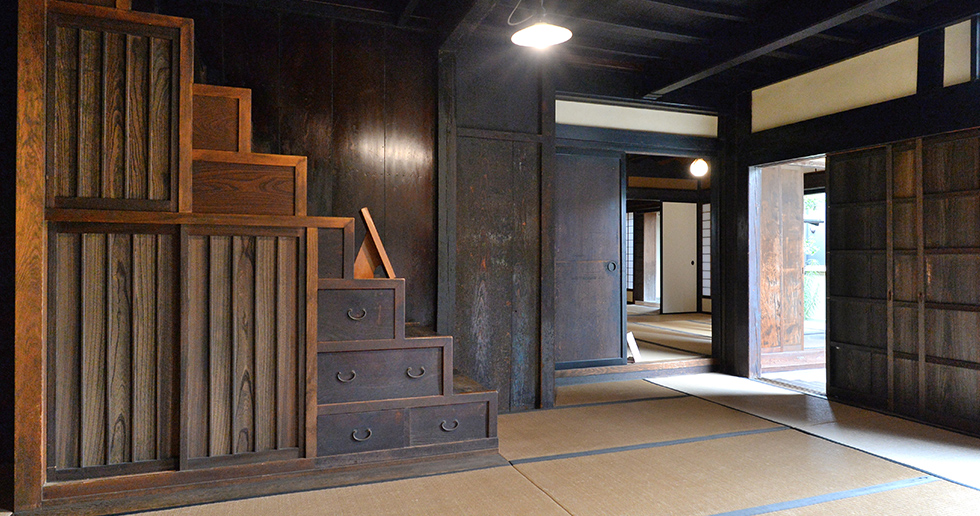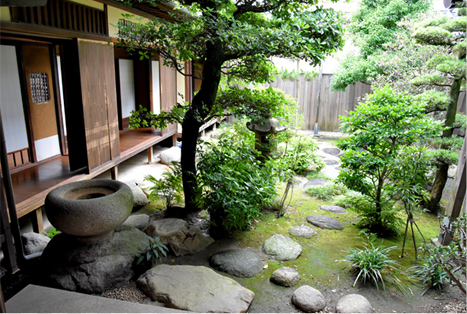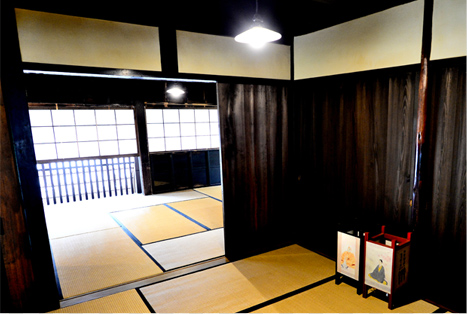Merchants Former Ozu Seizaemon family and former Hasegawa Jirobee family

- Matsusaka is a town where merchants are active
- Matsusaka is a merchant town.
This is because Ujisato Gamo, the Sengoku warlord and founder of Matsusaka, said, ``Let's make Matsusaka (then called ``Matsuzaka'') the center of commerce,'' including Rakuichi Rakuza. This is because a commercial policy was implemented. With the birth of wealthy merchants such as Mitsui, Ozu, and Hasegawa, Matsusaka eventually came to be known as a ``merchants' town.''
The reason behind the birth of many powerful merchants was the development of shipping, and the fact that the area was a producer of cotton, which was popular as a souvenir for shrine visits.
Anticipating that Edo would become a big city, Matsusaka merchants all moved to Edo. These stores were called ``Edo store'' (on the other hand, Matsusaka's house was ``honke'').

- The Old Ozu Seizaemon House is the ``main house'' where Ozu Seizaemon, a wealthy merchant who was active during the Edo period, lived, and has been preserved and opened to the public.
The third generation, Seizaemon Nagahiro, worked as an apprentice at a paper wholesaler in Edo, and with financial support from MotooriNorinaga 's great-grandfather, he opened a paper shop and managed over 40 shops.
When business stabilized, he returned to Matsusaka, left the management of the Edo store to the manager, and ran the store while still in Matsusaka.

- What was the Matsusaka merchant afraid of?
- Part of the mansion where the former Ozu Seizaemon family actually lived remains, and it's really interesting to imagine what the merchants' lives were like back then.
For example, the second floor of the built-in building, where materials such as letters and rankings of the richest people are displayed, has iron bars running across the ceiling. For some reason. ``This is to prevent thieves from breaking in from above,'' a former Ozu family management staff member told me. I see, in buildings at that time it was easy to break in through the ceiling if the tiles were removed, so they used iron bars to prevent it.

- "There's something that the Matsusaka merchants were even more afraid of. What do you think?"
...What's scarier than a thief? ? ?
"...It's 'fire'. There were so many fires back then, so to keep everything from getting lost, we used a 'Manryobako', a safe that was buried underground."
When I was impressed and thought, ``Oh, I see,'' the former Ozu family management staff member grinned and said, ``Oh, I see.''
``Thieves won't take everything with them, but fires will take everything with them, so it seems that the servants were strictly told to be careful with fire.''

- Just like the Ozu family, the former home of Hasegawa Jirobe, who was famous as a wealthy merchant, has signs saying ``Beware of Fire'' posted all over the place, which clearly shows his vigilance.
Thanks to their daily precautions, they avoided the fire. And, fortunately, it remained (and continued to be preserved) in its original form until now.
Truly, I love the relay of people's history more than anything.

- Willingly enforced for worshipers (Segyo)
- There are also stories unique to this mansion along Ise Kaido. During the Edo period, thanksgiving pilgrimages to IseJingu became an explosive trend, and the Ise Kaido road was filled with people heading to and returning from the shrine, some of whom came out with only the clothes on their backs. There were people sitting under the bridge, hungry and without money.
The people of Matsusaka were originally deeply religious, and they treated people visiting Ise with great hospitality and worked hard to enforce the rules. In Buddhism, this is considered to be the accumulation of virtue. Some people who seek enforcement have a ladle in their hand, and they are given food and money. Those who are enacted are not in the least bit miserable, and those who do so are happy to do so.

- It was a blessing that he was able to travel even though he was penniless, so he was amazed at the kindness of the Japanese people back then.
The Ozu Seizaemon family was no exception, and reportedly carried out ``Musubi Enforcement'' on people who spent the night at Matsusaka Ohashi Bridge. If you look at the kitchen area, you can see several stoves for cooking rice.
I think they cooked rice many times there and made lots of piping hot rice balls for everyone.

- A simple and steady Matsusaka merchant
- Like the Ozu family, the ``Former Hasegawa Jirobee House'' is an interesting historical heritage that tells of the rise of the Matsusaka merchants.
Jirobe Hasegawa was a cotton wholesaler who quickly expanded into Edo and achieved success. This place is also close to the former Ozu Seizaemon family, so be sure to check it out as well.

- Each shrine has its own Shinto altar, "Fire Caution" paper pasted here and there, a wonderful collection of large and small coins, a vast garden and pond, and an Inari Shrine located there. You can see the valuable remains that have been built over the years.

- Although it is the former home of a wealthy merchant, there is nothing extravagant about it. The husband is enthusiastic about his work, is deeply religious, follows the family's rules, and lives a simple and steady life.
Regardless of whether they had money or not, their lives would probably not have changed.
I suddenly thought that Matsusaka Merchant might refer to that spirit.
-

``Mise no Ma'' facing Sangu Kaido. The former Ozu Seizaemon family house has about 15 rooms and two storehouses. -

Although not everything remains, it has a main building that was used for trading, including a viewing room, a counting room, and an okuzashiki (room for the wife), two storehouses, and a garden, and it has an appearance reminiscent of the bygone era. -

It's spacious, but there's nothing superfluous or extravagant about it. This is the spirit of Matsusaka merchants! -

The former Hasegawa Jirobei House looks chic and nice from the outside, with its raised roof and fog cover.

If you want to explore the history of Matsusaka merchants, we recommend the ``Wandering Town Walk'' route recommended by the Tourism Association. Starting from Matsusaka Station, you can visit 11 spots on foot in 2 hours, including the ``Ozu Seizaemon House,'' ``Birthplace of the Mitsui Family,'' ` MotooriNorinaga House,'' and ``Ruins of Norinaga Motoori's House.''
Along the way, you can try your hand at MatsusakaCotton Weaving Center at the Matsusaka Momen Hand Weaving Center, so be sure to give it a try (reservations required at least 2 days in advance. Charges apply). For information about walking around town, please contact the Matsusaka Tourism Exchange Center, the town of wealthy merchants.
Information can be collected at (0598-25-6565).
Former Ozu Seizaemon family

| address | 2195 Honmachi, MatsusakaCity |
|---|---|
| Fees etc. | General: 160 yen / Ages 6 to 18: 80 yen (group discount available) Shared admission ticket with former Hasegawa Jirobee House and History and Folklore Museum available |
| Access by public transportation | About 5 minutes by bus from JR/Kintetsu Matsusaka Station, get off at Honmachi, and about 3 minutes on foot. Approximately 10 minutes walk from JR/Kintetsu Matsusaka Station |
| Access by car | Approximately 15 minutes by car east from Matsusaka IC on the Ise Expressway |
Former Hasegawa Jirobei family

| address | 1653 Uomachi MatsusakaCity |
|---|---|
| Fees etc. | General: 320 yen / Ages 6 to 18: 160 yen (group discount available) Shared admission ticket with former Ozu Seizaemon House and History and Folklore Museum available |
| Access by public transportation | 10 minutes walk from JR/Kintetsu Matsusaka Station About 3 minutes on foot from Mie Kotsu bus “Shiyakusho-mae” stop |
| Access by car | Approximately 10 minutes by car from Ise Expressway “Matsusaka IC” |







